OK, let's start with an invader from outer space: Actually, it's a Black Arches moth, one of the 105 species recorded in our wood and the wayleave last Friday night. We'll come back to the moths in a minute, but first I want to show you some pictures of a butterfly that we found resting on the ground as the light was fading. It's not rare, but is normally up in the treetops so is very hard to get a photo of...
Actually, it's a Black Arches moth, one of the 105 species recorded in our wood and the wayleave last Friday night. We'll come back to the moths in a minute, but first I want to show you some pictures of a butterfly that we found resting on the ground as the light was fading. It's not rare, but is normally up in the treetops so is very hard to get a photo of...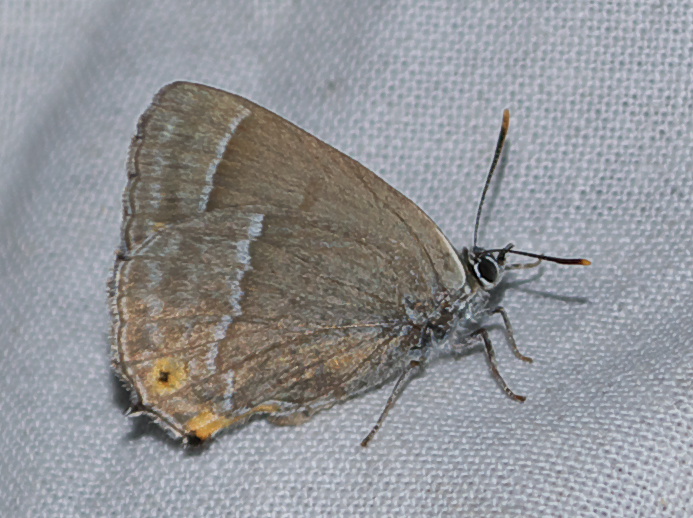 It's a Purple Hairstreak, usually found in the top of oaks. Very nice to know it's in our wood! One of the moth experts said it would be good to get it off the ground and onto a tree trunk where it could rest safely. However, I think the cold had made it a bit dopey, and it wanted to cling to my finger! I bet there's not many people who've managed to take a photo of a Purple Hairstreak on their finger!
It's a Purple Hairstreak, usually found in the top of oaks. Very nice to know it's in our wood! One of the moth experts said it would be good to get it off the ground and onto a tree trunk where it could rest safely. However, I think the cold had made it a bit dopey, and it wanted to cling to my finger! I bet there's not many people who've managed to take a photo of a Purple Hairstreak on their finger!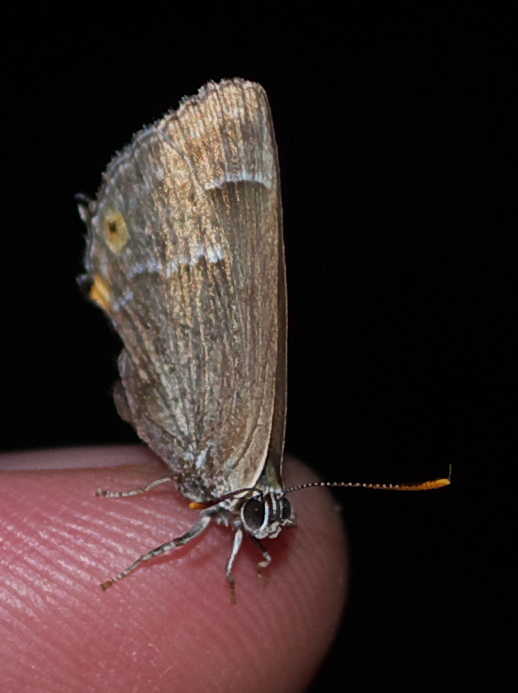
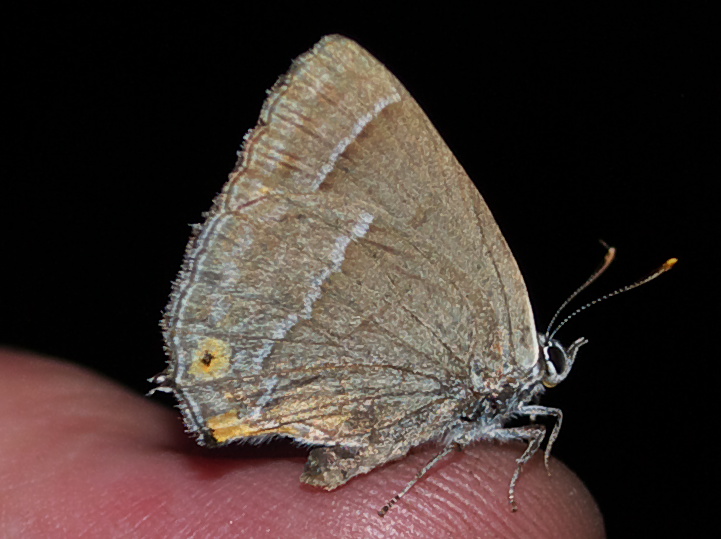 I eventually got it onto a tree, and in this photo you can just see a hint of the purple on the top of its wings:
I eventually got it onto a tree, and in this photo you can just see a hint of the purple on the top of its wings: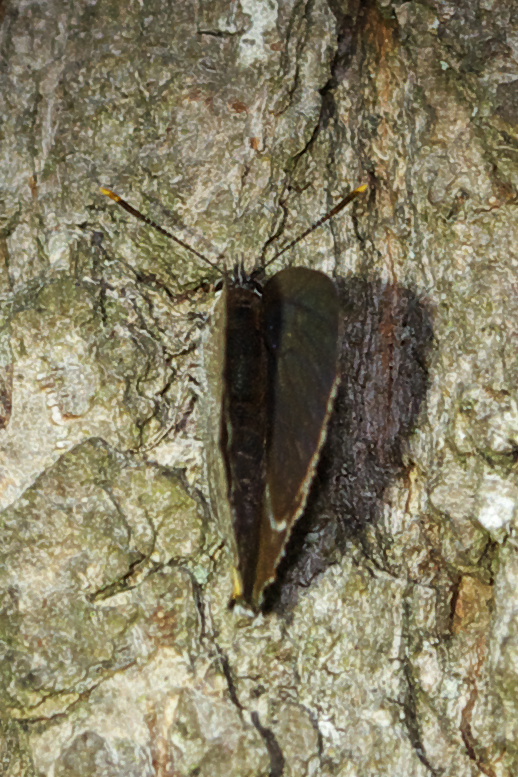 Anyway, back to the reason we were in the woods. The Sussex Moth Group were visiting to do a survey, arranged by Steve Wheatley of Butterfly Conservation. They did a similar survey a year ago with good results (see the pictures from last year here and here), and were interested to see how things had changed with the continuing regrowth of the coppice and the ground flora, and also how the rare Clay Fan-foot was doing. They all arrived a short time before dark and started setting up the moth traps:
Anyway, back to the reason we were in the woods. The Sussex Moth Group were visiting to do a survey, arranged by Steve Wheatley of Butterfly Conservation. They did a similar survey a year ago with good results (see the pictures from last year here and here), and were interested to see how things had changed with the continuing regrowth of the coppice and the ground flora, and also how the rare Clay Fan-foot was doing. They all arrived a short time before dark and started setting up the moth traps:
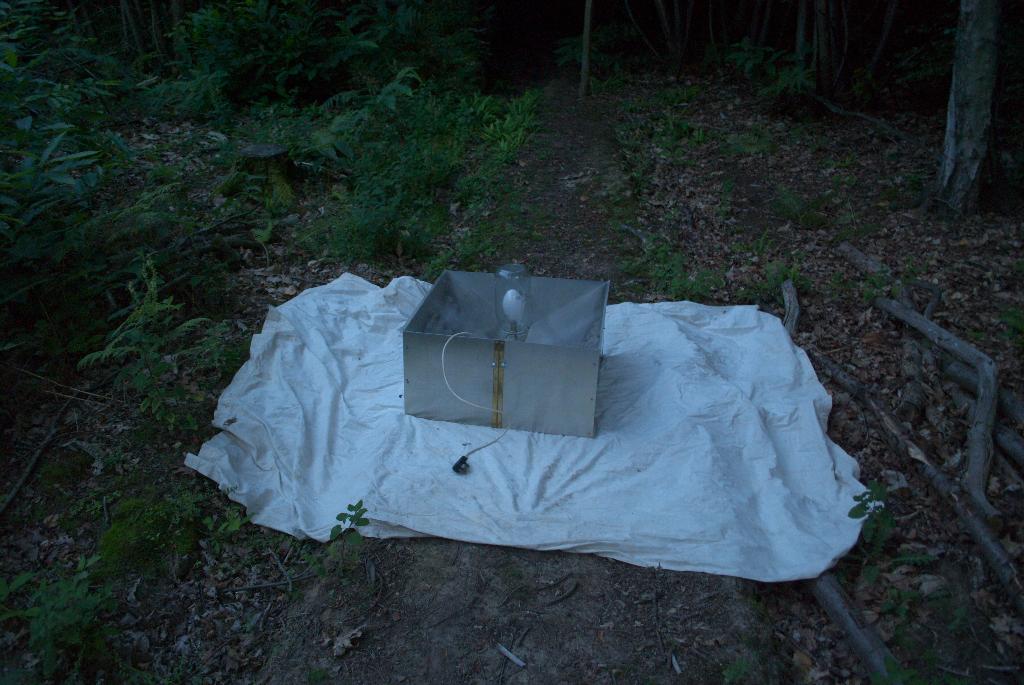
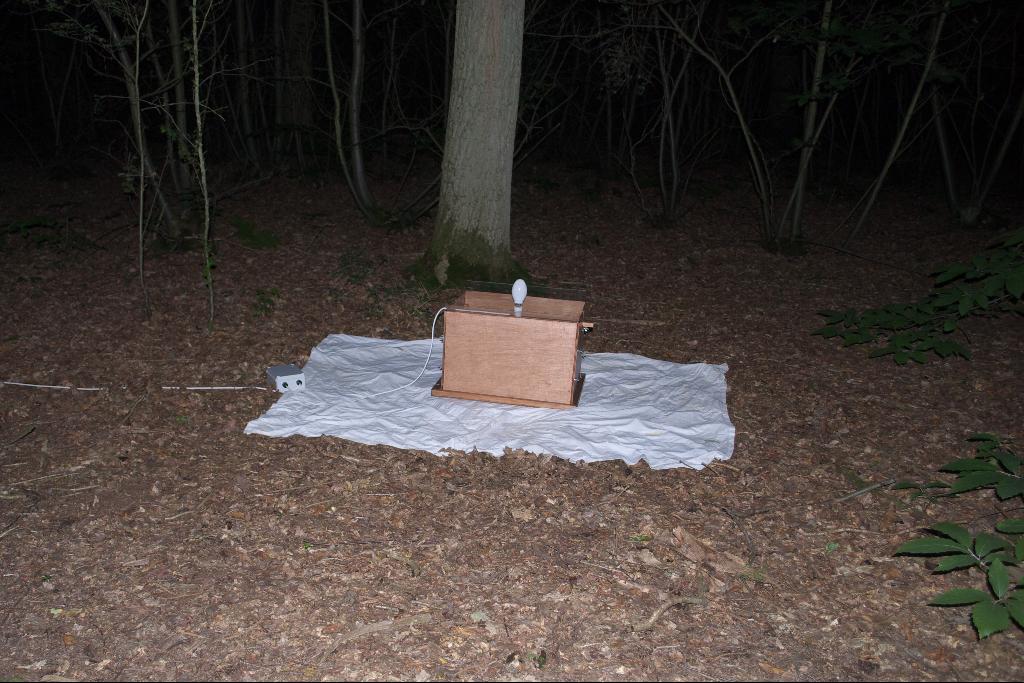
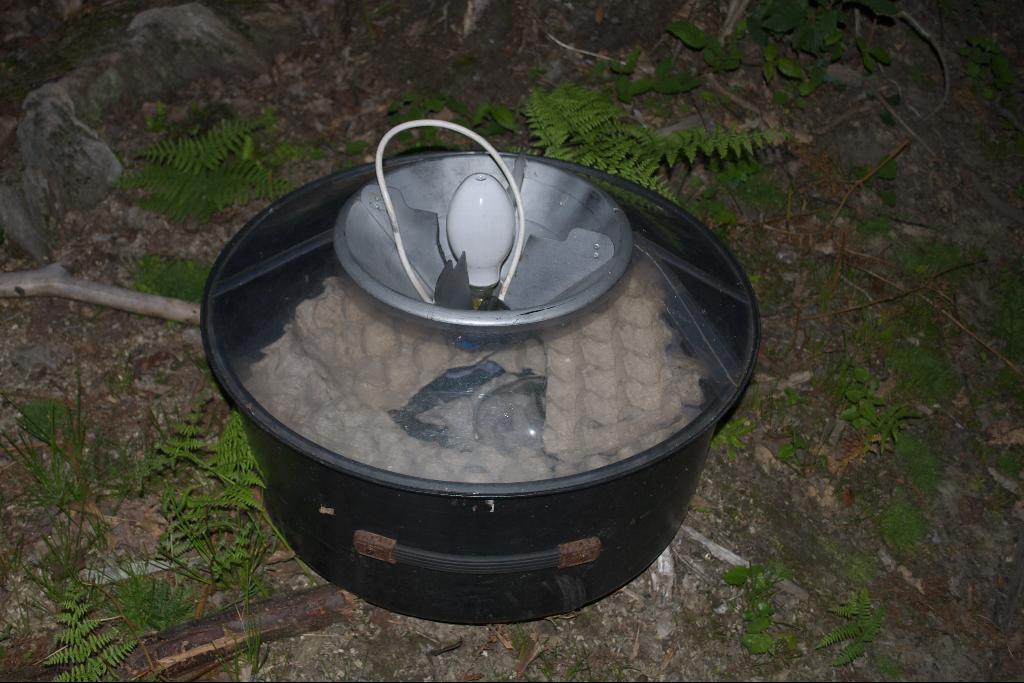 They're all powered by a few small petrol generators:
They're all powered by a few small petrol generators: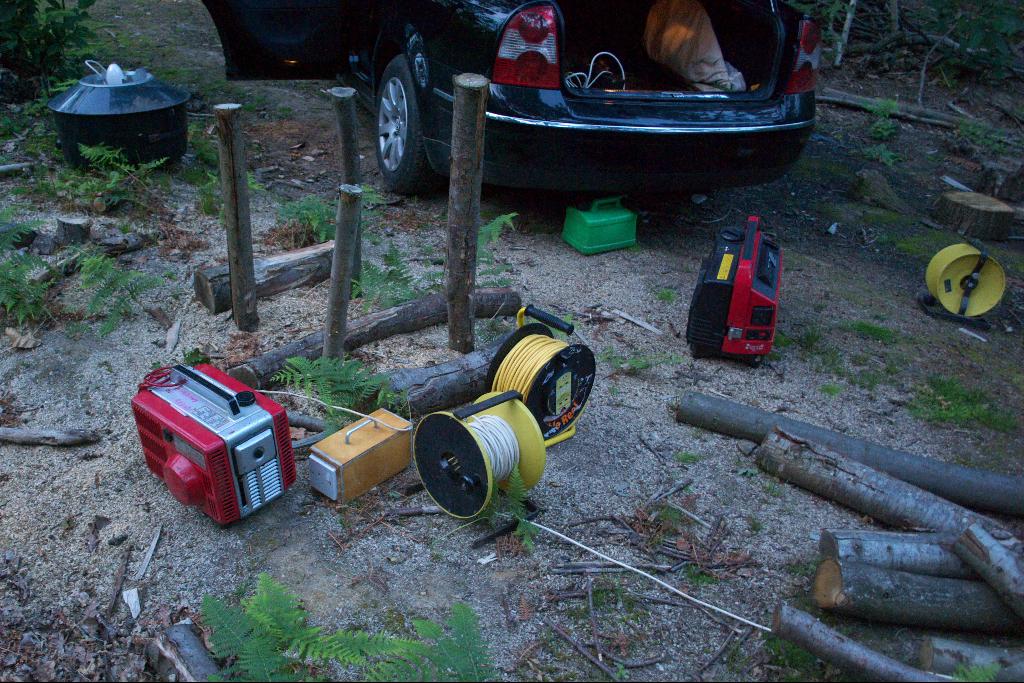
 The wood looks quite different with a moth survey going on...
The wood looks quite different with a moth survey going on...
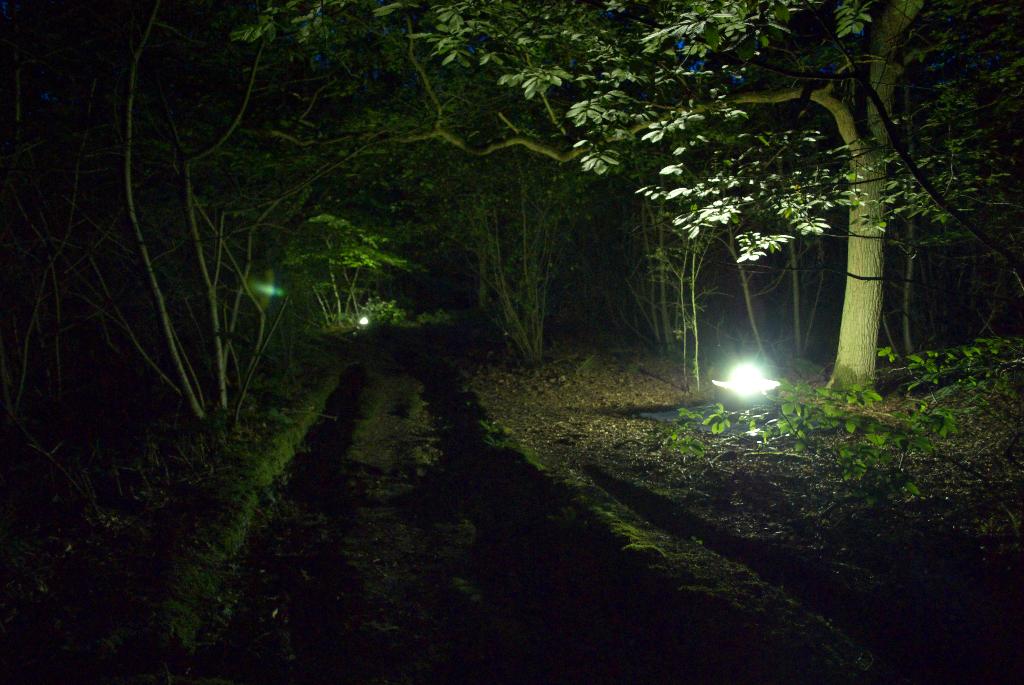
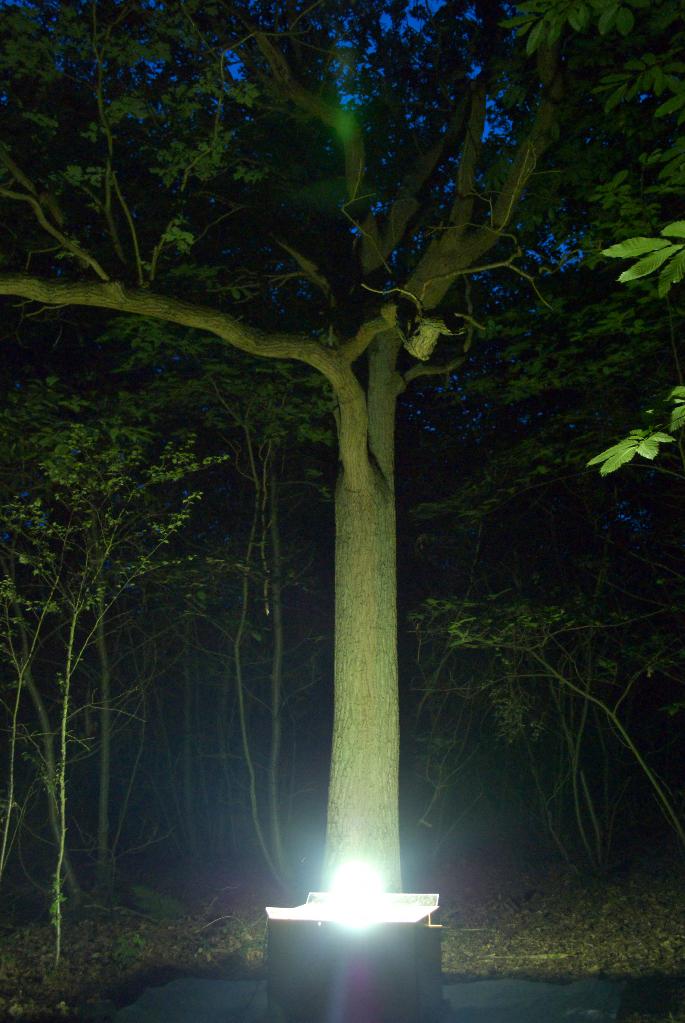 In case you were wondering, the traps don't harm the moths - they just get stuck inside them until the moth experts turn up to open the trap and ID everything in them, after which they are released. The only moth handled differently this time was the rare Clay Fan-foot, as they wanted to know exactly how many there were. To avoid double counting, each one found was kept in a sample container until the end of the evening, when they were all released without any harm.
In case you were wondering, the traps don't harm the moths - they just get stuck inside them until the moth experts turn up to open the trap and ID everything in them, after which they are released. The only moth handled differently this time was the rare Clay Fan-foot, as they wanted to know exactly how many there were. To avoid double counting, each one found was kept in a sample container until the end of the evening, when they were all released without any harm. Right, on to the moths. I'm fairly sure I have the ID right on these, but do tell me if you spot a mistake and I'll correct it. I don't have photos of all 105 species - that would have been quite a challenge, and also we wimped out a bit before 1am, while the experts stayed on for a couple of hours longer. Photographing small insects in the dark is quite tricky, but hopefully you'll enjoy the photos anyway.
Right, on to the moths. I'm fairly sure I have the ID right on these, but do tell me if you spot a mistake and I'll correct it. I don't have photos of all 105 species - that would have been quite a challenge, and also we wimped out a bit before 1am, while the experts stayed on for a couple of hours longer. Photographing small insects in the dark is quite tricky, but hopefully you'll enjoy the photos anyway.
The star of the show, a Clay Fan-foot. There were 11 found this year, compared to 7 last year. 8 of the 11 were found in the area we coppiced 18 moths ago, giving further support to the theory that this rare moth needs recently coppiced areas of woodland to survive.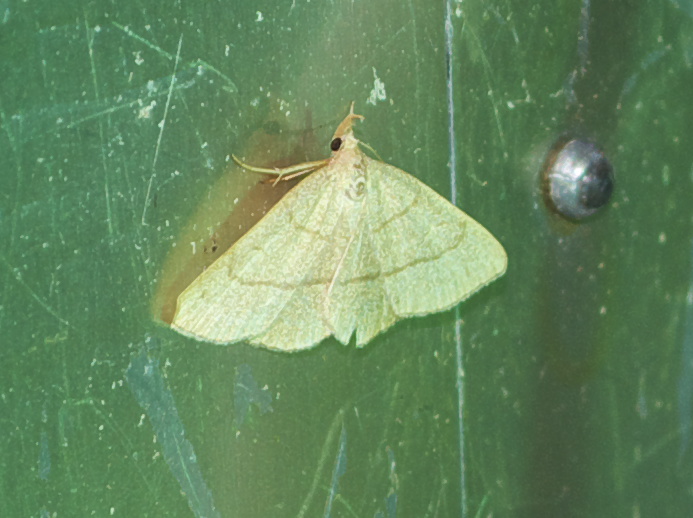 The Blood-vein:
The Blood-vein: The Rosy Footman:
The Rosy Footman: Some more of the Black Arches, whose close up was at the start of this post:
Some more of the Black Arches, whose close up was at the start of this post: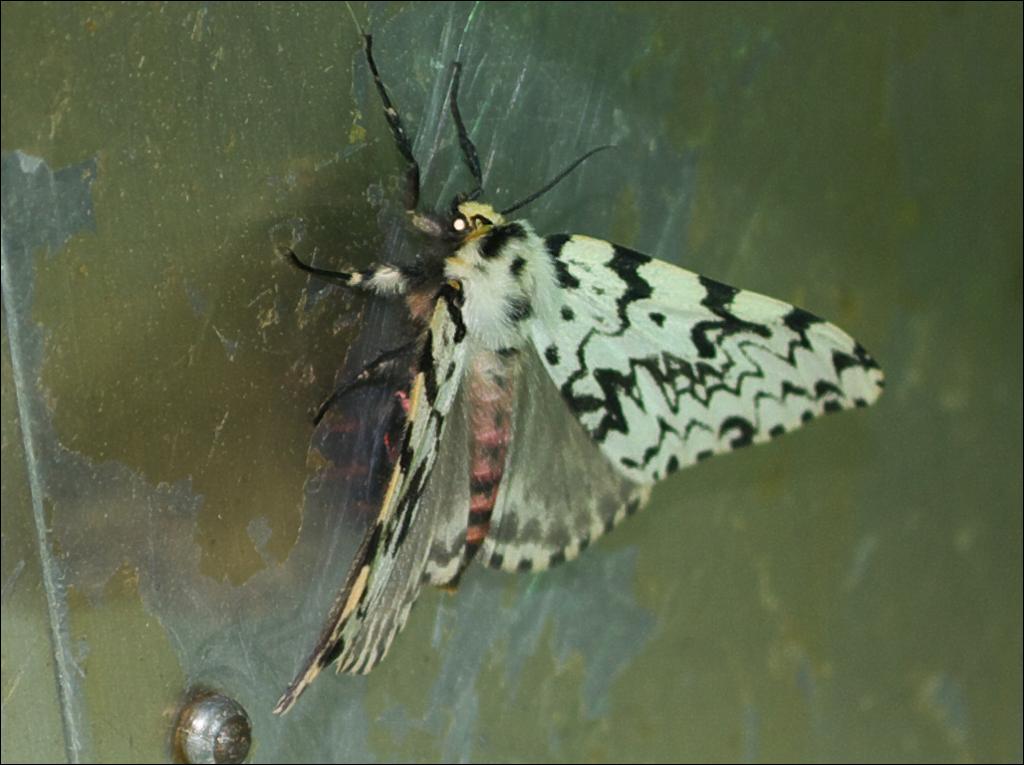
 The Large Emerald, which we heard has been having a good year:
The Large Emerald, which we heard has been having a good year: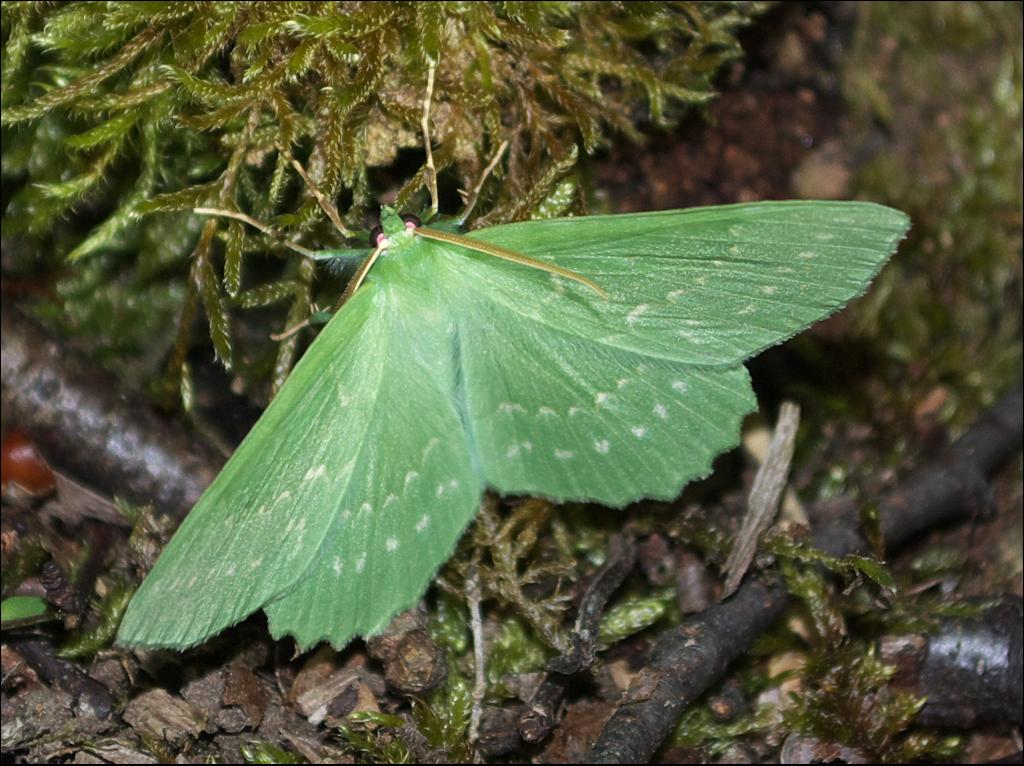 The Large Yellow Underwing:
The Large Yellow Underwing: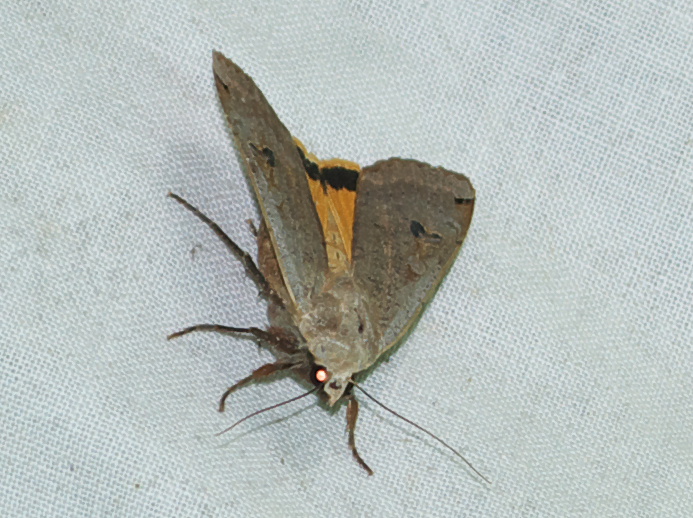 The Satin Lutestring:
The Satin Lutestring: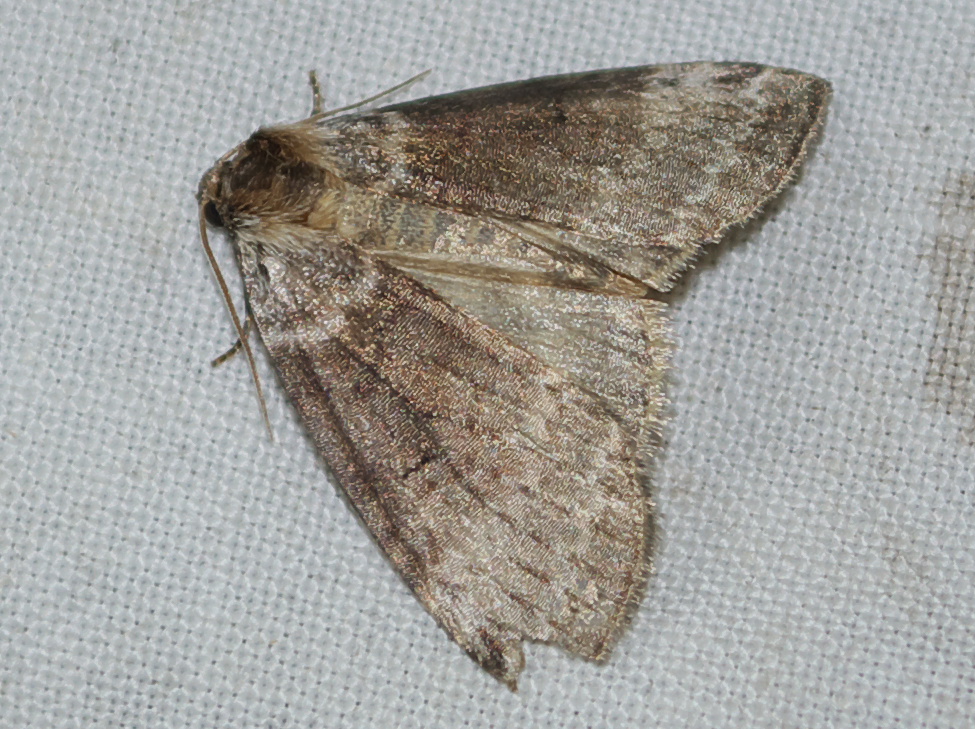 The Buff Arches:
The Buff Arches: The Gold Spot (one of my favourites this year):
The Gold Spot (one of my favourites this year):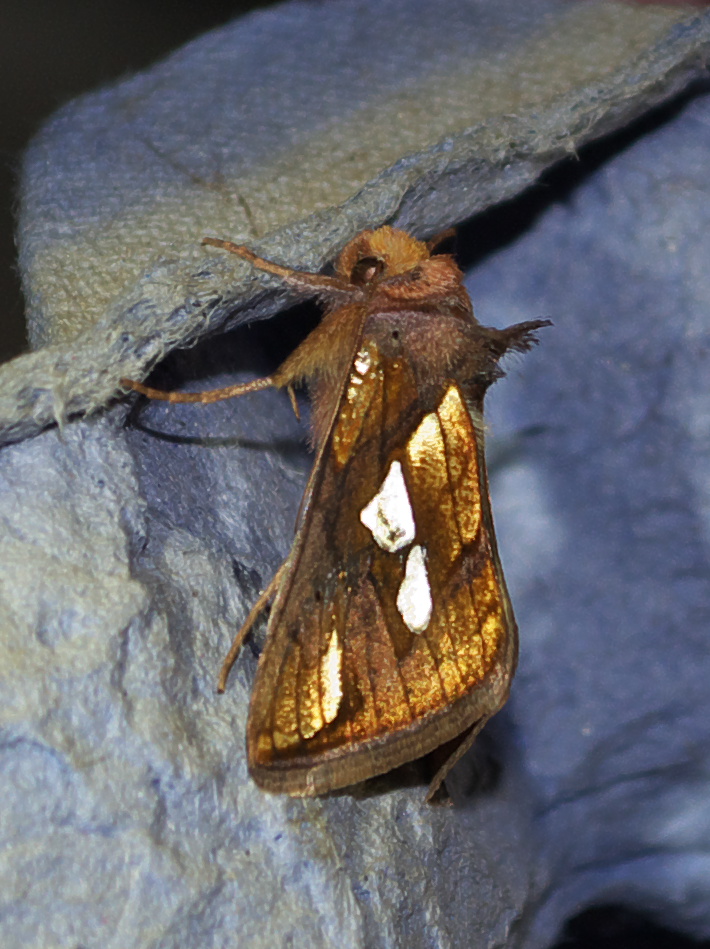
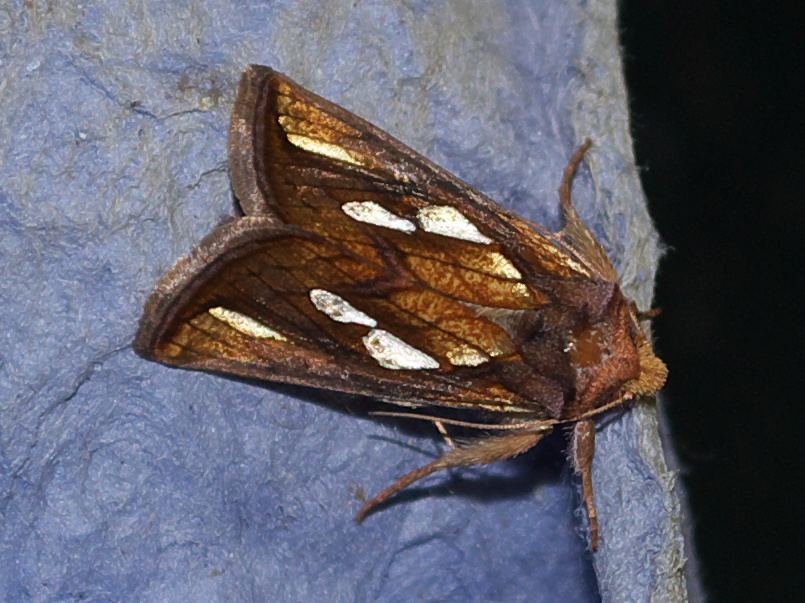 The Yellow Tail:
The Yellow Tail: The Clouded Border:
The Clouded Border: The Scalloped Hook-tip:
The Scalloped Hook-tip:
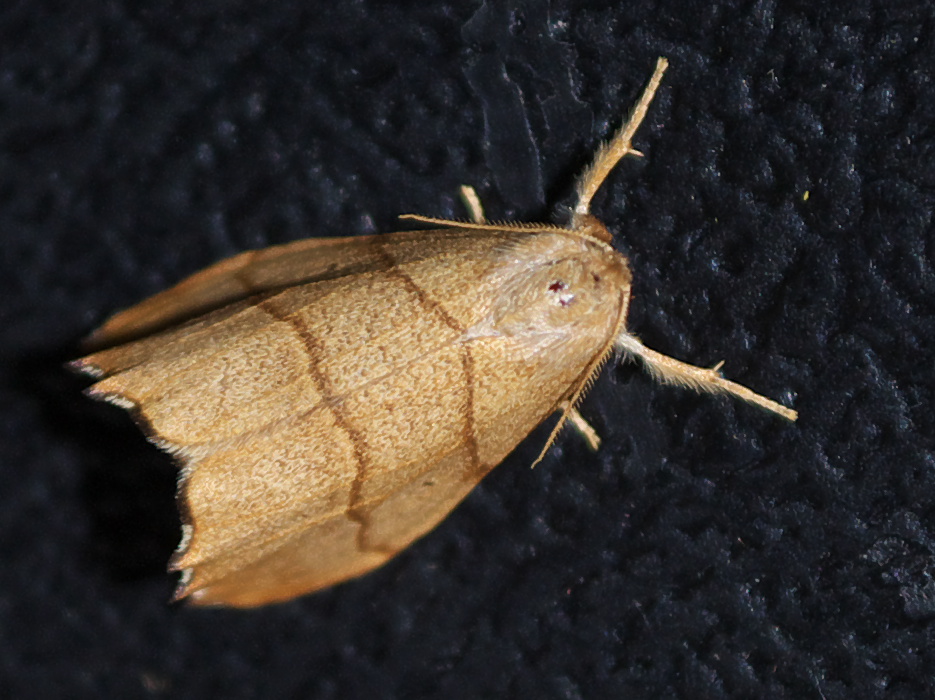 The Chocolate Tip:
The Chocolate Tip: The Gold Triangle:
The Gold Triangle: The Oak Hook-tip:
The Oak Hook-tip: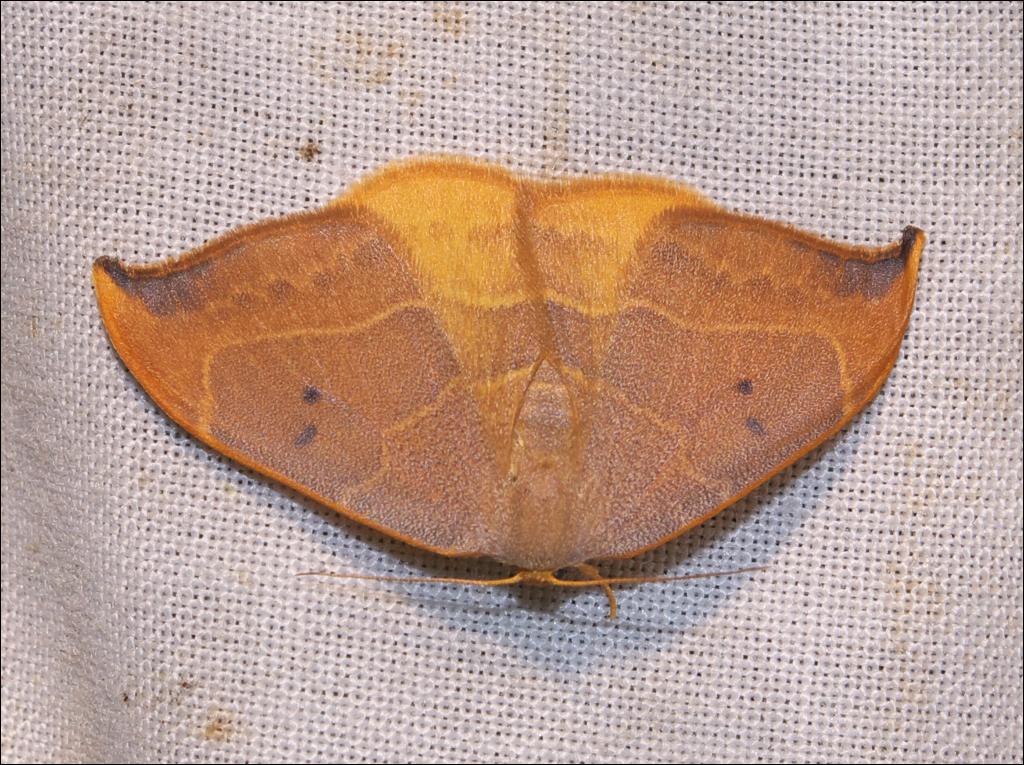 The Pebble Hook-tip:
The Pebble Hook-tip: The Dun-bar:
The Dun-bar: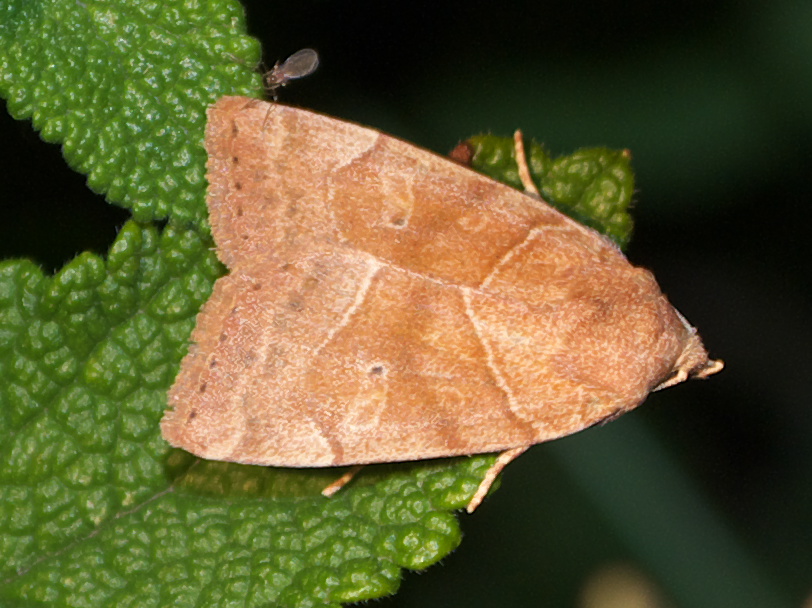 The Peppered moth (I like this one!):
The Peppered moth (I like this one!):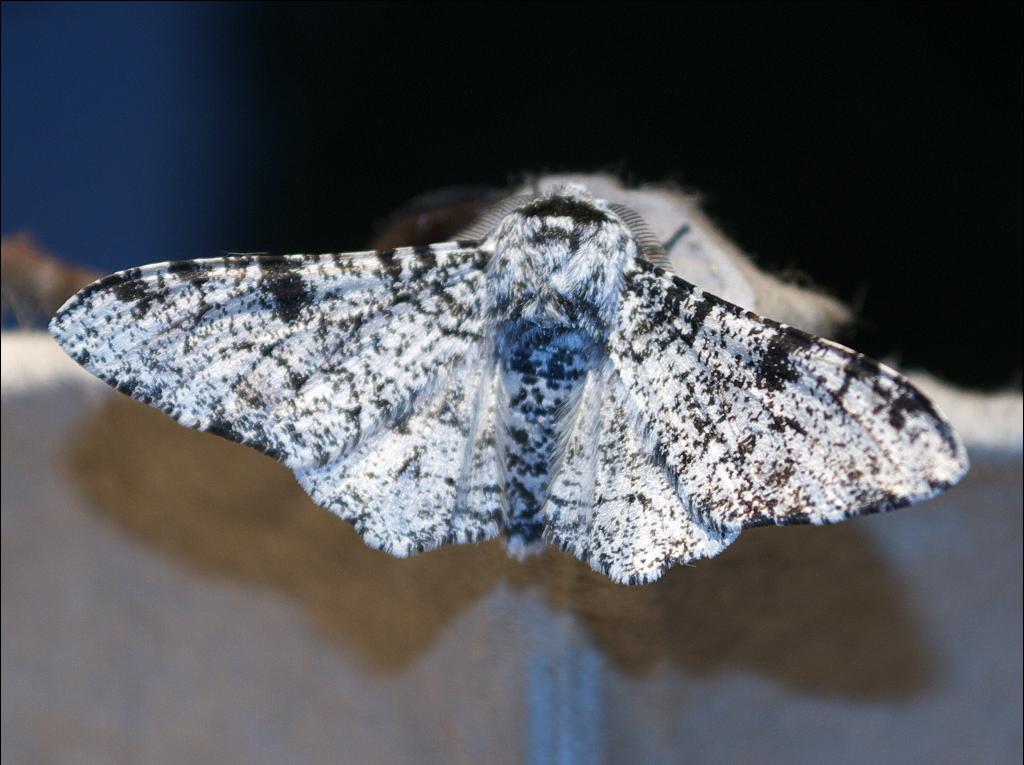 The Ruby Tiger:
The Ruby Tiger: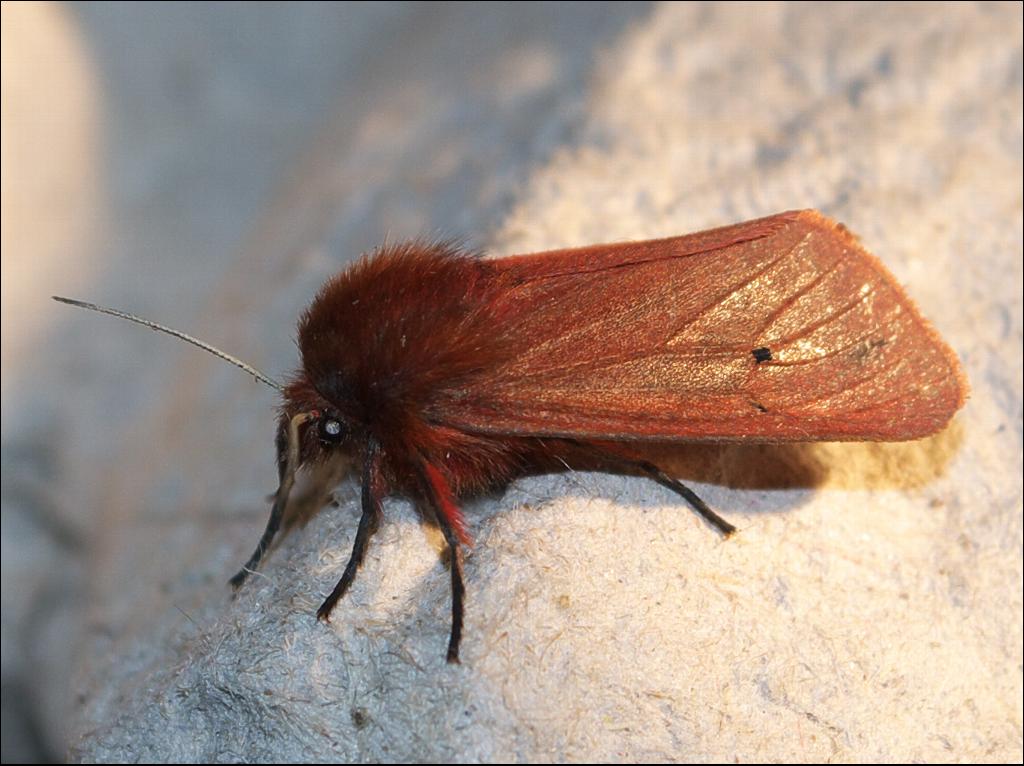 The Sharp Angled Peacock (I think):
The Sharp Angled Peacock (I think):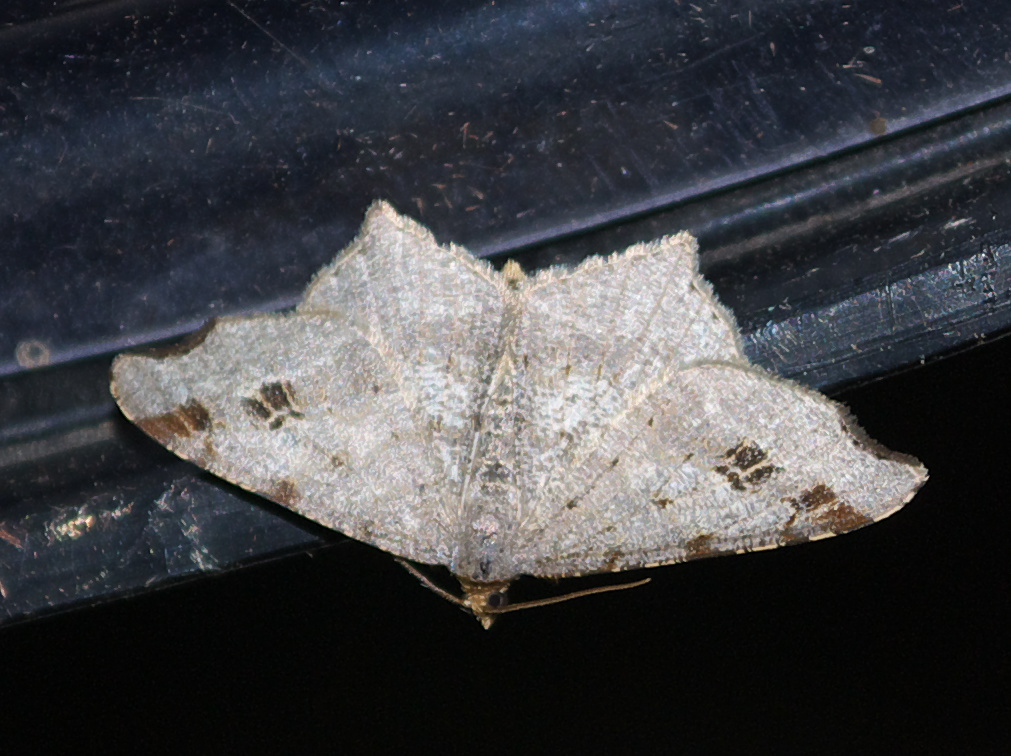 We didn't just get moths, there were also Crickets:
We didn't just get moths, there were also Crickets: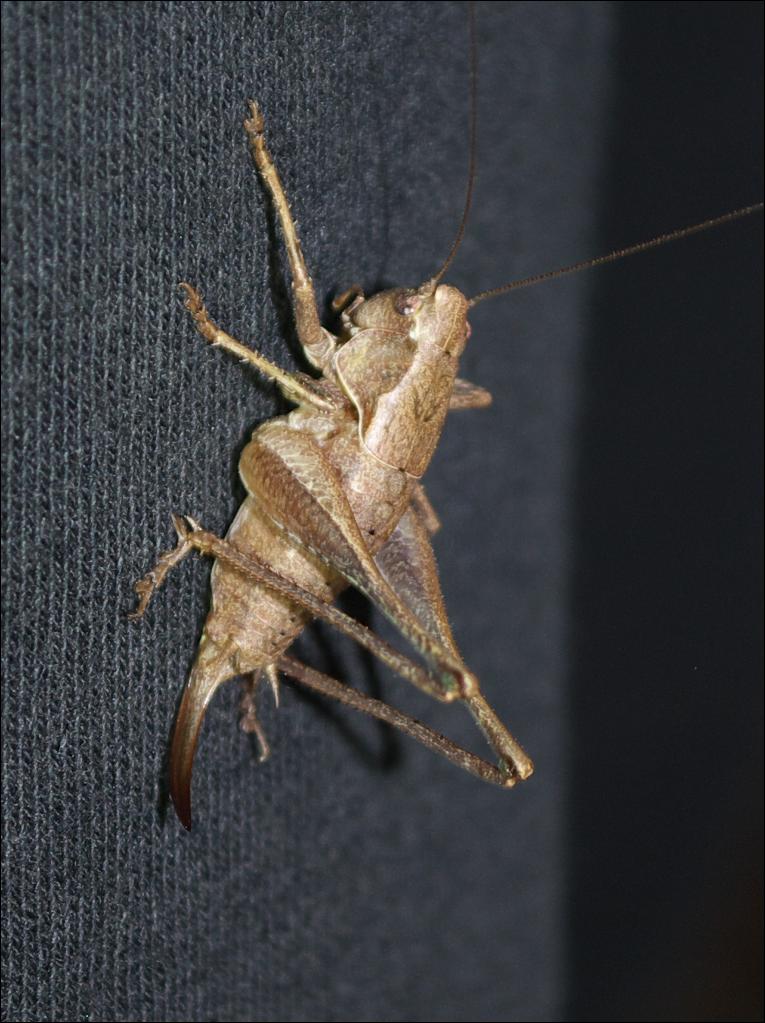 A Birch Shield Bug, which I'd never seen before:
A Birch Shield Bug, which I'd never seen before: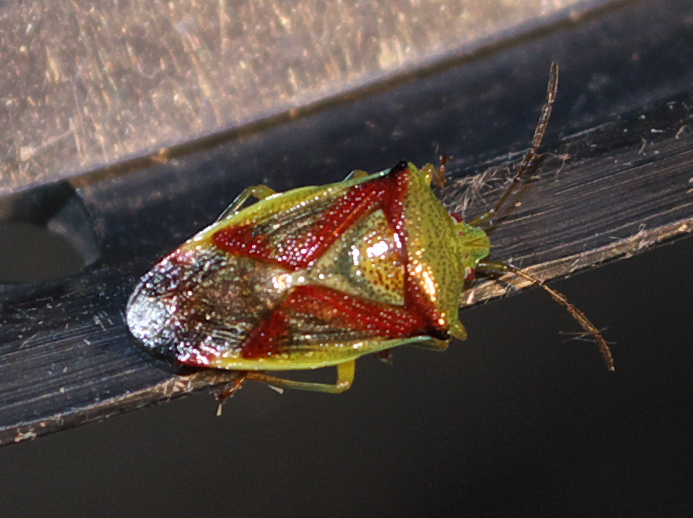 And a spider, which I guess was hoping to eat a moth!
And a spider, which I guess was hoping to eat a moth!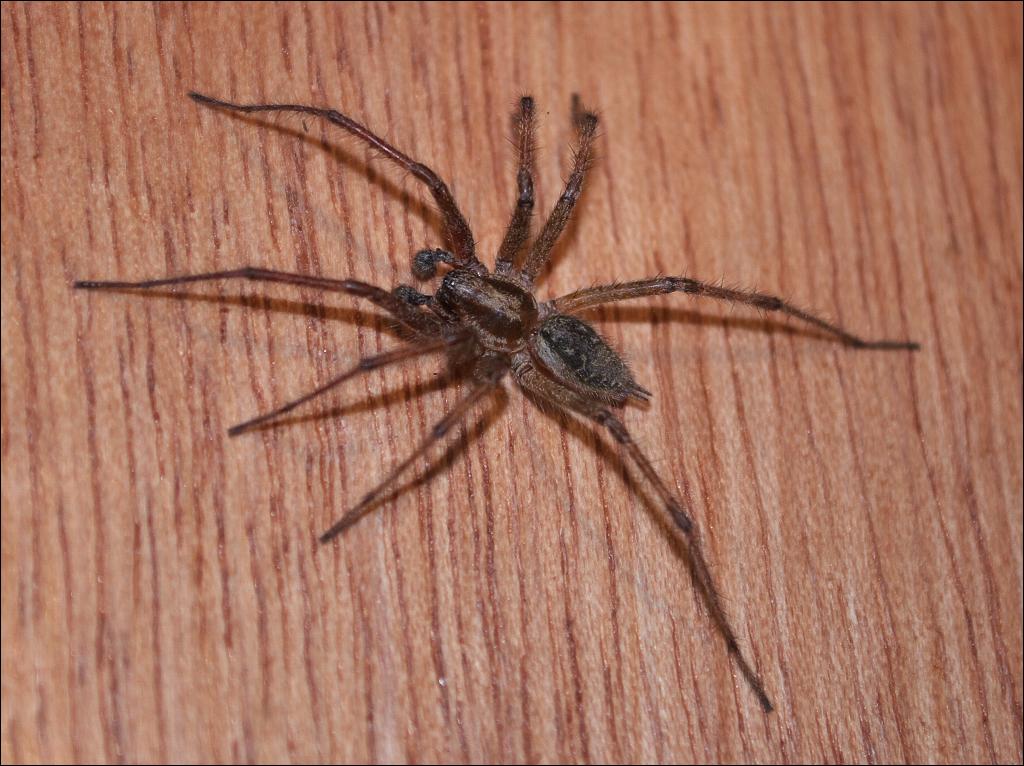 It was a great evening, and many thanks to everyone who came to run the survey. Combining this year and last year, the guys have found 147 species of moth in our woods! You can see the pictures from last year here and here.
It was a great evening, and many thanks to everyone who came to run the survey. Combining this year and last year, the guys have found 147 species of moth in our woods! You can see the pictures from last year here and here.
If you'd like to know the full list of moths found this year, here it is:
Honeysuckle Moth
Diamond-back Moth
Long-horned Flat-body
Common Yellow Conch
Bramble Shoot Moth
Bulrush Veneer
Marbled Piercer
Pearl Grass-veneer
Brown China-mark
Ringed China-mark
Garden Pebble
Long-winged Pearl
Dusky Pearl
Mother of Pearl
Gold Triangle
Rosy Tabby
Grey Knot-horn
Ash-bark Knot-horn
Scalloped Hook-tip
Oak Hook-tip
Pebble Hook-tip
Peach Blossom
Buff Arches
Satin Lutestring
Common Lutestring
Large Emerald
Birch Mocha
Blood-vein
Small Fan-footed Wave
Single-dotted Wave
Small Scallop
Riband Wave
Red Twin-spot Carpet
Small Phoenix
July Highflyer
Scallop Shell
Small Rivulet
Wormwood Pug
V-Pug
Small White Wave
Clouded Border
Scorched Carpet
Peacock Moth
Sharp-angled Peacock
Brimstone Moth
Dusky Thorn
Early Thorn
Scalloped Oak
Peppered Moth
Mottled Beauty
Engrailed
Common Wave
Poplar Hawk-moth
Buff-tip
Sallow Kitten
Poplar Kitten
Iron Prominent
Pebble Prominent
Lesser Swallow Prominent
Swallow Prominent
Coxcomb Prominent
Pale Prominent
Chocolate-tip
Yellow-tail
Black Arches
Rosy Footman
Dingy Footman
Scarce Footman
Ruby Tiger
Turnip Moth
Dark Sword-grass
Shuttle-shaped Dart
Flame Shoulder
Large Yellow Underwing
Lesser Yellow Underwing
Broad-bordered Yellow Underwing
Lesser Broad-bordered Yellow Underwing
Least Yellow Underwing
True Lover's Knot
Setaceous Hebrew Character
Cabbage Moth
Smoky Wainscot
Suspected
Grey Dagger
Knot Grass
Reed Dagger
Copper Underwing
Straw Underwing
Double Kidney
Olive
Dun-bar
Dark Arches
Common Rustic
Scarce Silver-lines
Green Silver-lines
Oak Nycteoline
Nut-tree Tussock
Gold Spot
Silver Y
Straw Dot
Snout
Small Fan-foot
Clay Fan-foot
Olive Crescent
Mike
Tuesday, 4 August 2009
2009 moth survey
Subscribe to:
Post Comments (Atom)

5 comments:
Thank you both, an amazing set of photo's and as for your wood in the 'at night' images, very atmospheric.
The Yellow Tail looked almost cuddley!
Very cool, Mike! I love the eyes of the black arches. I thought it looked like a prettier version of the gypsy moth and sure enough they're in the same genus Limantria. Will have to look into this coppicing bit as I'm unfamiliar with the term.
Hi Katie,
Yes, I was very pleased with that photo, I had no idea it would come out looking like that!
The wikipedia page on coppicing is OK as a background. It's basically a method of woodland management used for thousands of years - probably because it keeps the trees at a size that can be managed without big machinery, which obviously didn't exist until the last 50-100 years!
It involves cutting the wood in blocks (approx 0.25 to 5 acres), so each block is cut every 3 to 40 years, the interval depending on the tree species and the size of timber desired. The trees then regrow rapidly, as they have an existing mature root system. While they're regrowing, a lot more light reaches the ground for a few years, promoting all kinds of plants, flowers and the wildlife that depends on them, and because it's been done for so long, the wildlife actually needs you to keep coppicing the wood in order to survive.
In our wood we coppice about 0.5 acre a year, to heat our home and sell the surplus, and we're in our fourth year of doing this now. As a result, there will soon always be a part of the wood at any given stage of regrowth, so the different wildlife should always be able to find a bit of woodland that suits it.
Mike
I just noticed the date of this post. Did you do a moth survey this year?
Thanks for the information about coppicing. Yep, I did look up Wikipedia, but I like what you wrote.
Oh, how I'd love to have my own parcel of woods. It sound like you and your wife have quite the job, though.
Hi Katie,
Sadly we didn't get to do one this year, as the butterfly conservation guy in our area changed jobs. And we moved house too!
However, we hope to get a survey done in summer 2011...
And yes, managing the wood is a big job, but it's fun, and it's nice not to be using fossil fuels for heating at home!
Mike
Post a Comment